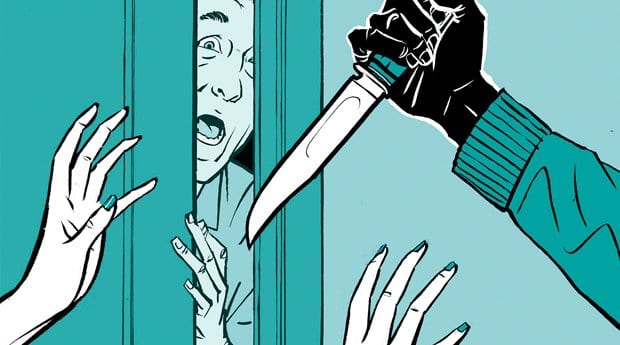Winston Moseley murdered Kitty Genovese at 3am on Friday, March 13, 1964, in New York City. Genovese was a 28-year-old bar manager in Queens. She was driving home from work when the 29-year-old Moseley (computer punch-card operator by day, housebreaker and murderer by night) spotted her. He followed her to Kew Gardens, attacked her, ran off, then returned a short time later to attack her again in a back foyer of her apartment building, where she had taken refuge, sexually assaulting her and stabbing her repeatedly.
With the 50th anniversary of Genovese’s murder just passed, the media is reexamining this sensational story, and reluctant though I may be to join in with ruthlessly scavenging through this poor woman’s remains, I think there’s a valuable point to be made about her case. I can’t help but think that The New York Times missed a key opportunity with its original coverage of the murder.
There were 636 murders in New York City in 1964. Genovese wasn’t wealthy or famous, but The Times covered her death in such a way that it garnered attention across the United States. According to the front-page story in The Times, 38 people saw the attack, but nobody did anything to help. One person called the police after Genovese had died.
This strange story of witness apathy captured everyone’s imagination. To those who were wary of the civil-rights movement, then at its height, the crime seemed indicative of the erosion of social conventions. It was the subject of Sunday sermons and the impetus for psychological research into what became known as the “bystander effect,” which says that the more witnesses there are to a calamity, the less likely people are to help the victim. The story was also used in the effort to establish the 911 emergency phone systems.
Within the last decade or so, it’s become clear that the Genovese case isn’t quite what The Times originally reported. Most notably, there were far fewer than 38 eyewitnesses, and several of them did try to help (so, while this case began the study of “bystander effect,” it probably isn’t an example of the phenomenon). A man yelled from his window, “Leave that girl alone!” At least two people called the police, and Sophia Farrar bravely left her apartment to help Genovese and was holding her when the ambulance arrived. Finally, though it probably wasn’t relevant to the crime, Genovese was a lesbian and lived with her partner, Mary Ann Zielonko.
It was shoddy reporting, but at least it helped in the establishment of the 911 system. However, because of this sloppy journalism, an opportunity was missed. When Moseley attacked Genovese the second time, inside the apartment building, her neighbour and friend Karl Ross saw her being stabbed just outside his door. Terrified, he called a friend and a neighbour, and then left his apartment via the window, making his way into a neighbour’s apartment, where he finally called the police.
Ross didn’t leave his apartment to defend Genovese and took ages getting around to calling the police; it could seem like cowardice. However, Ross was probably gay, and at that time in New York he would have been wary of homophobic attacks, as much from the police as anyone else. Getting involved would have brought him in contact with a police force that he probably feared intensely. With better investigation and a lot of courage, The Times, in addition to the witness apathy story, could have run a story about how rampant police homophobia results in fewer crimes being reported. This might have been leveraged to improve the way law enforcement treated gay people and perhaps moved forward queer rights in general.
Maybe it’s fanciful to think that a mainstream paper could have published a story about police homophobia in the mid-1960s. I also have the benefit of research material based on years of reexamination of the case. And I certainly doubt that such a story would have had the same clout as the witness-apathy narrative we’re used to associating with the Genovese case, but I can’t help but wonder how such a story might have improved the situation not only of queer people, but society at large.
History Boys appears in every issue of Xtra.


 Why you can trust Xtra
Why you can trust Xtra


